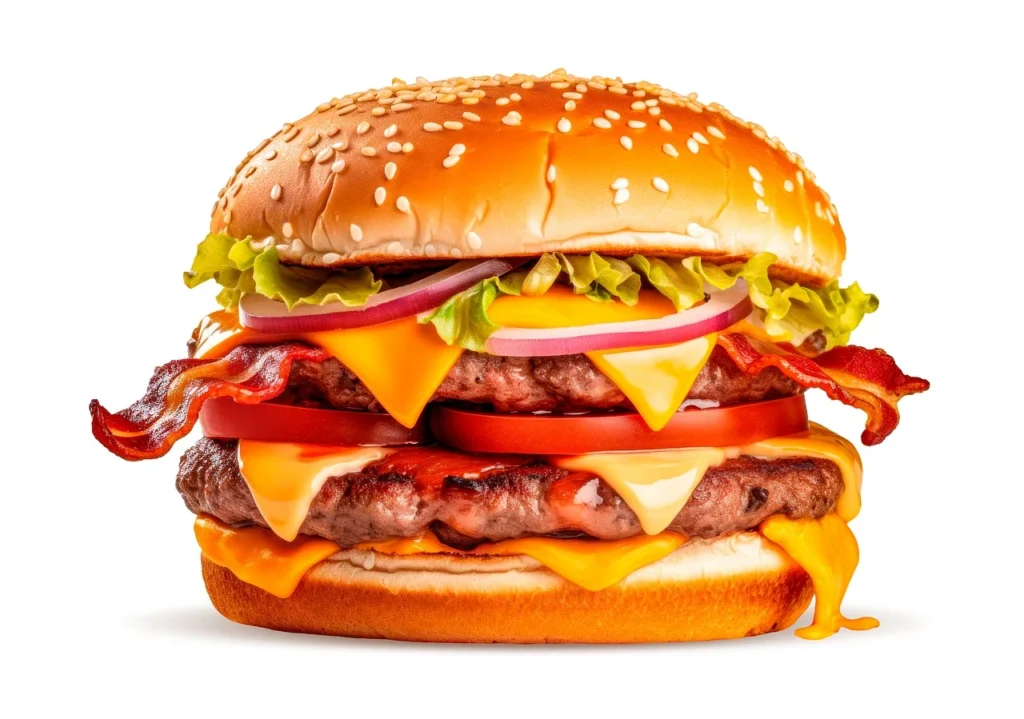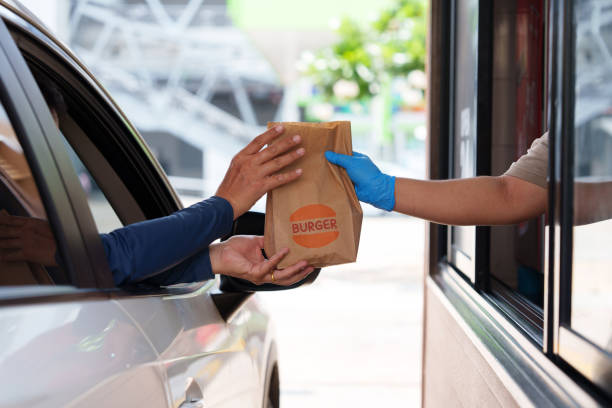Why Fast Food is More Than Just a Meal
Introduction
- Fast food is no longer merely a convenient choice; it has woven itself into the very fabric of modern culture. Across the world, countless individuals depend on quick, budget-friendly meals to navigate their hectic routines. From the iconic golden arches of McDonald’s to charming local burger joints, fast food has established itself as a cornerstone of daily life, influencing both economies and societies alike. But where did this global phenomenon originate, and perhaps more importantly, where is it headed? This post dives deep into the captivating history of fast food, weighing its advantages against its pitfalls, while uncovering how the industry is transforming to align with emerging trends.
The Rise of Fast Food: A Historical Perspective

The concept of fast food may seem like a modern invention, but its origins trace back over a century. However, it wasn’t until the post-World War II era that the industry truly began to flourish. Fast food’s appeal—built on the pillars of speed, efficiency, and affordability—resonated strongly with the rapidly evolving lifestyle of the mid-20th century. The war’s aftermath ushered in sweeping societal changes: car ownership surged, suburban neighborhoods expanded, and the demand for convenient, time-saving solutions soared.
As family dynamics shifted and home-cooked meals became less feasible, establishments promising ready-to-eat food gained traction. Among the first to capitalize on this demand was McDonald’s. In the 1940s, the company revolutionized food preparation with an assembly-line model, delivering meals at unprecedented speed. Ray Kroc’s visionary franchising model in the 1950s catapulted McDonald’s into a global juggernaut, transforming it into an emblem of American fast food. Following close behind, Burger King differentiated itself with flame-grilled burgers, while Wendy’s carved out its niche with fresh, never-frozen beef patties upon its 1969 debut.
Over time, these industry trailblazers expanded far beyond U.S. borders. By the late 20th century, names like McDonald’s, Burger King, and Wendy’s were not just national brands but global phenomena. Fast food had evolved into a cultural symbol, paralleling the rapid urbanization and shifting lifestyles of the modern age. The proliferation of cities fueled demand for quick, inexpensive meals that aligned with the bustling, on-the-go pace of urban life.
Moreover, the standardization of fast food offerings played a pivotal role in its global spread. Travelers could enjoy the comfort of familiar flavors and consistent quality, whether in Paris or Tokyo. The introduction of drive-thru lanes and, later, delivery services amplified convenience, cementing fast food’s status as an indispensable aspect of contemporary living.
Fast Food and Health: A Double-Edged Sword

While fast food has become a cultural staple, it has also sparked a host of health-related concerns. Chief among these is the connection between fast food consumption and chronic health conditions such as obesity, diabetes, and heart disease. The Centers for Disease Control and Prevention (CDC) highlights a sobering statistic: since the 1970s, the obesity rate in the U.S. has more than doubled—a trend that closely mirrors the rise of fast food. Calorie-dense meals, loaded with sugar, sodium, and unhealthy fats, often exceed daily nutritional requirements in a single sitting.
Children, in particular, face an alarming risk. Studies show that kids who consume fast food more than twice a week are significantly more likely to develop obesity, leading to serious long-term health implications. This growing public health crisis has not gone unnoticed, prompting greater awareness of the detrimental effects of a fast-food diet.
In response to mounting criticism, the fast food industry has taken steps to adapt. Health-conscious menu options, such as salads, grilled chicken, and fruit sides, have become commonplace. Chains like McDonald’s have introduced initiatives such as their “Signature Crafted Recipes,” while Chipotle allows customers to customize meals to suit dietary preferences.
Another transformative shift lies in the rise of plant-based alternatives. With options like the Impossible Burger and Beyond Meat gaining traction, fast food chains are catering to vegetarians, vegans, and eco-conscious consumers. Plant-based foods saw a remarkable 27% sales increase in 2020 alone, underscoring the growing demand for healthier and more ethical dining options.
Yet, significant challenges persist. Despite healthier menu additions, many fast food meals remain high in calories and low in nutrients. Processed ingredients and sugary beverages dominate menus, perpetuating health risks. The Harvard T.H. Chan School of Public Health highlights a troubling reality: while progress has been made, fast food still leans heavily toward unhealthy choices.
Section 3: The Economics of Fast Food (Industry Insights)

The fast food industry doesn’t just sell meals; it fuels a global economic engine worth over $900 billion. This sector extends its reach into numerous domains—food production, retail, real estate, and employment—cementing its influence in virtually every corner of the world. From the sprawling streets of New York to the bustling markets of Tokyo, brands like McDonald’s, KFC, and Burger King have left an indelible mark on economies and cultures alike. With globalization accelerating, fast food has become more than just a meal; it’s a symbol of modern consumerism and convenience.
One of the most visible ways fast food impacts economies is through job creation. In the United States, this sector employs over 4 million workers, making it one of the largest sources of low-wage employment. These roles span a vast spectrum, from restaurant staff serving fries and burgers to corporate teams managing global logistics and marketing strategies. For many, fast food jobs serve as an entry point into the workforce, offering opportunities to a diverse range of individuals, including students and part-time workers.
Beyond direct employment, the economic ripple effect of fast food is profound. This industry stimulates agriculture, logistics, and supply chains on a monumental scale. For instance, McDonald’s is one of the world’s largest beef purchasers, influencing livestock farming practices globally. The demand for ingredients like beef, chicken, potatoes, and lettuce creates a complex network of suppliers spanning continents. Imagine this: a single fast food meal might feature beef from South America, lettuce from Mexico, and potatoes grown in Idaho, all packaged in materials manufactured in Asia. This intricate web highlights the industry’s reliance on and contribution to global trade.
Additionally, the fast food sector fuels the real estate market. Prime locations—urban centers, highway exits, and shopping malls—are often targeted by major chains seeking visibility and foot traffic. These locations don’t just host restaurants; they transform entire areas, attracting other businesses and boosting property values. A McDonald’s or Starbucks can elevate a neighborhood’s perceived economic potential, turning a simple outlet into a catalyst for local development.
However, with great economic power comes significant challenges. The industry’s reliance on low-cost labor has drawn criticism for perpetuating wage inequality. Movements like “Fight for $15” have emerged, demanding higher wages and improved working conditions for fast food employees. Moreover, the sector faces increasing competition from healthier and locally-owned eateries, forcing traditional fast food giants to rethink their pricing strategies and value propositions.
—
Section 4: Fast Food Trends in 2025 (Innovation and Adaptation)

Fast food is no longer confined to burgers and fries. In 2025, the industry is a hotbed of innovation, driven by shifting consumer values, environmental awareness, and technological advancements. From plant-based offerings to AI-powered convenience, fast food chains are reimagining what it means to serve a “quick meal.”
Plant-Based and Alternative Proteins
The rise of plant-based foods is perhaps the most transformative trend. With increasing numbers of consumers opting for vegan or flexitarian lifestyles, chains like Burger King and McDonald’s are redefining their menus. Offerings such as the Impossible Whopper and McPlant burger have gained traction, delivering the familiar taste of meat without the environmental cost. By 2025, lab-grown meats may even enter the mainstream, providing ethical and sustainable options that cater to the evolving tastes of a conscious consumer base.
Delivery Apps and Digital Ordering
Convenience is king, and delivery apps are the new royalty. Services like DoorDash and Uber Eats have revolutionized how customers access fast food, enabling them to enjoy meals without stepping outside. Many chains are also developing proprietary apps to cut out middlemen and offer exclusive deals. By 2025, these platforms will likely dominate, making digital-first dining the norm. Imagine customizing a burger, tracking its delivery in real time, and earning loyalty points—all from your smartphone.
Sustainable Practices
As environmental consciousness grows, so does the pressure on fast food chains to adopt sustainable practices. Packaging innovations—biodegradable wrappers, reusable containers, and even edible cups—are becoming standard. Beyond packaging, companies like KFC are investing in renewable energy and zero-waste kitchens. These changes aren’t just good for the planet; they’re essential for winning over eco-conscious consumers.
Healthier Menus
Gone are the days when fast food was synonymous with unhealthy eating. Today, chains are prioritizing nutrition, offering options like grilled proteins, whole-grain buns, and organic salads. Transparency is also key—calorie counts and ingredient lists are prominently displayed, empowering customers to make informed choices. By 2025, even indulgent favorites like milkshakes might come in low-sugar, nutrient-enriched variations, blurring the line between indulgence and health.
The Role of Technology
Technology is not just a tool; it’s the backbone of modern fast food. AI-driven kiosks allow for hyper-personalized ordering, while mobile apps streamline payments and loyalty programs. Some chains are even experimenting with robotics to automate cooking processes, ensuring speed and consistency. By 2025, your next fast food meal might be prepared and delivered entirely by machines.
—“Fast food is more popular than ever—but why? Explore the key reasons behind its growing demand, from convenience to evolving menu trends.”


